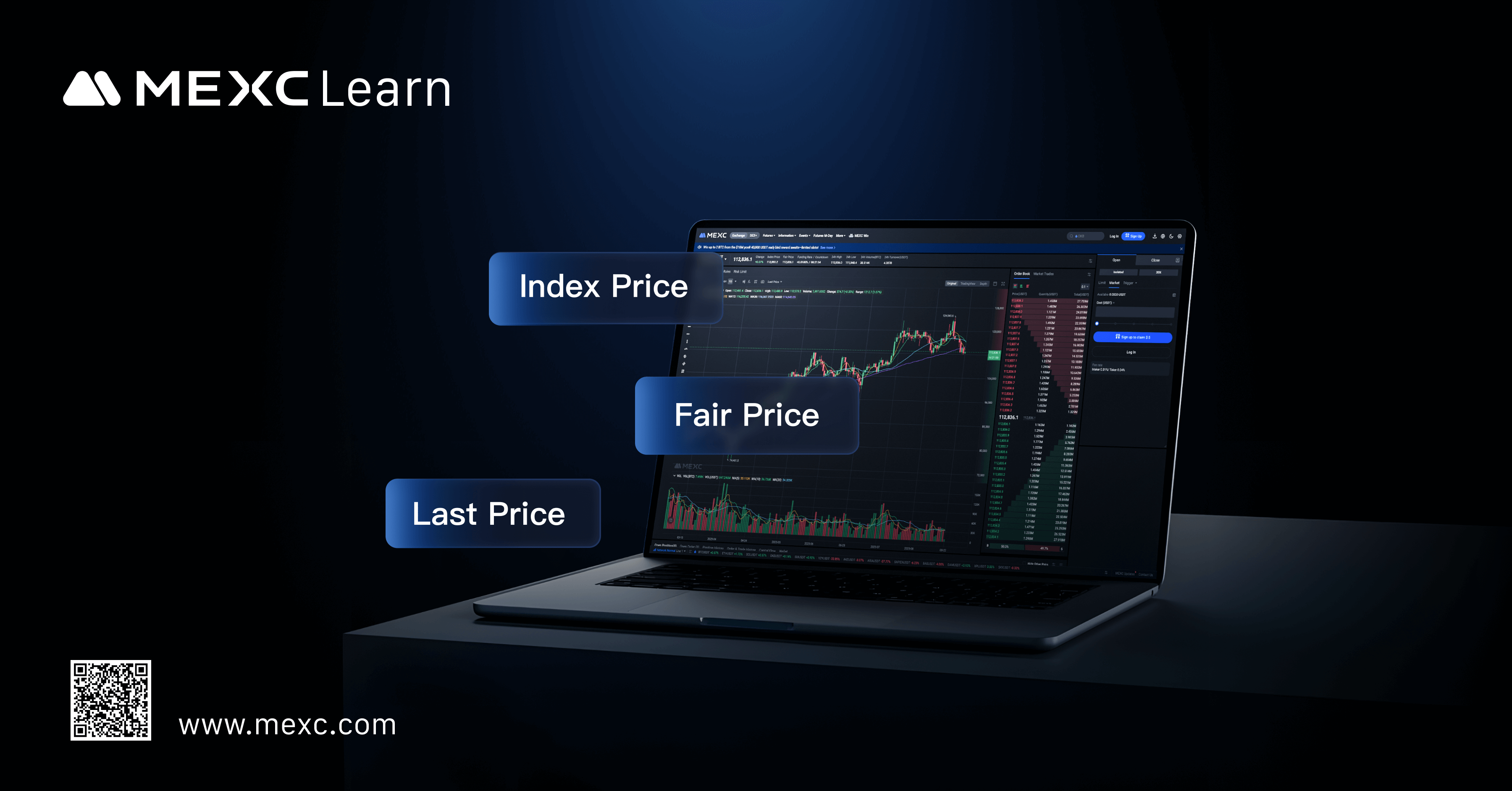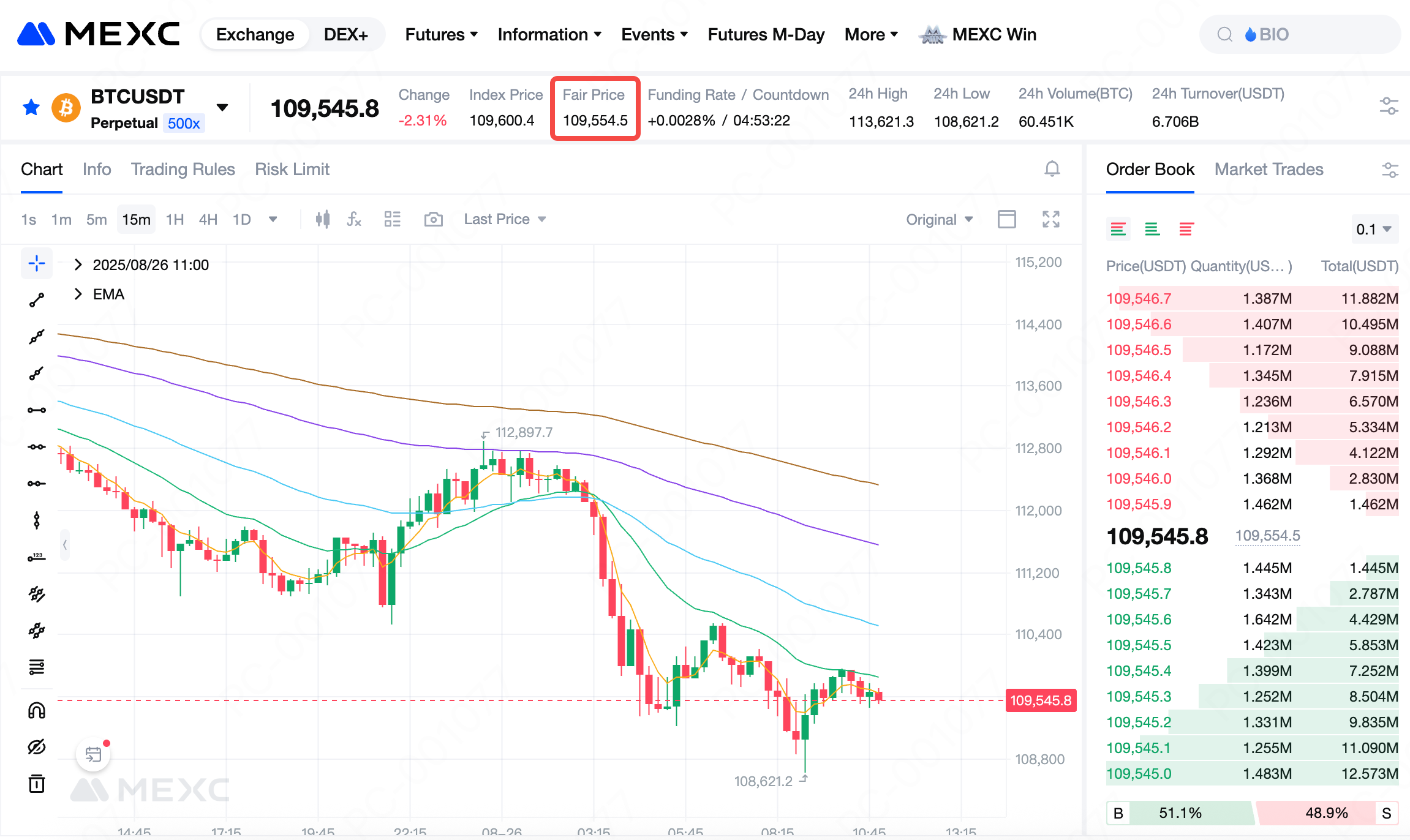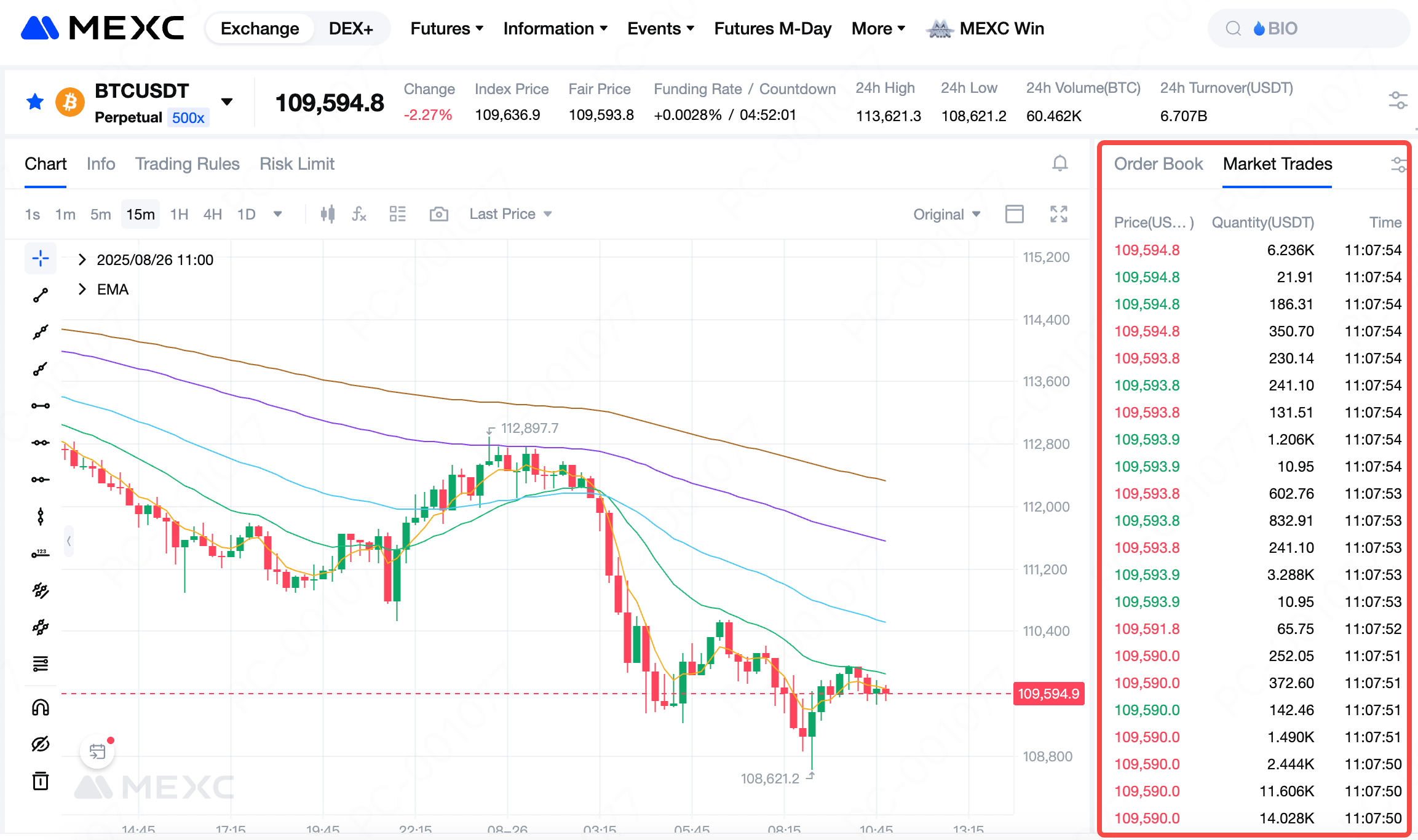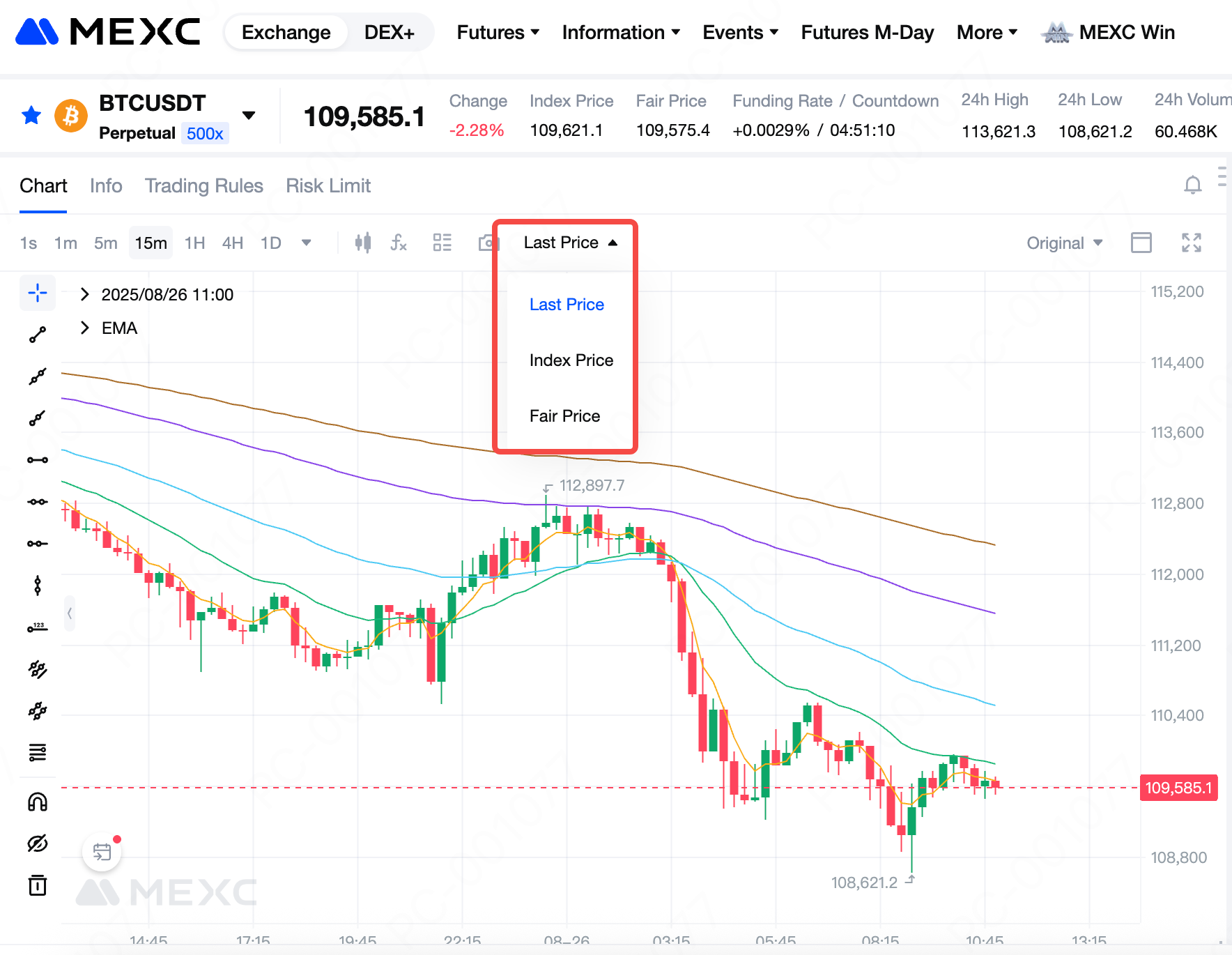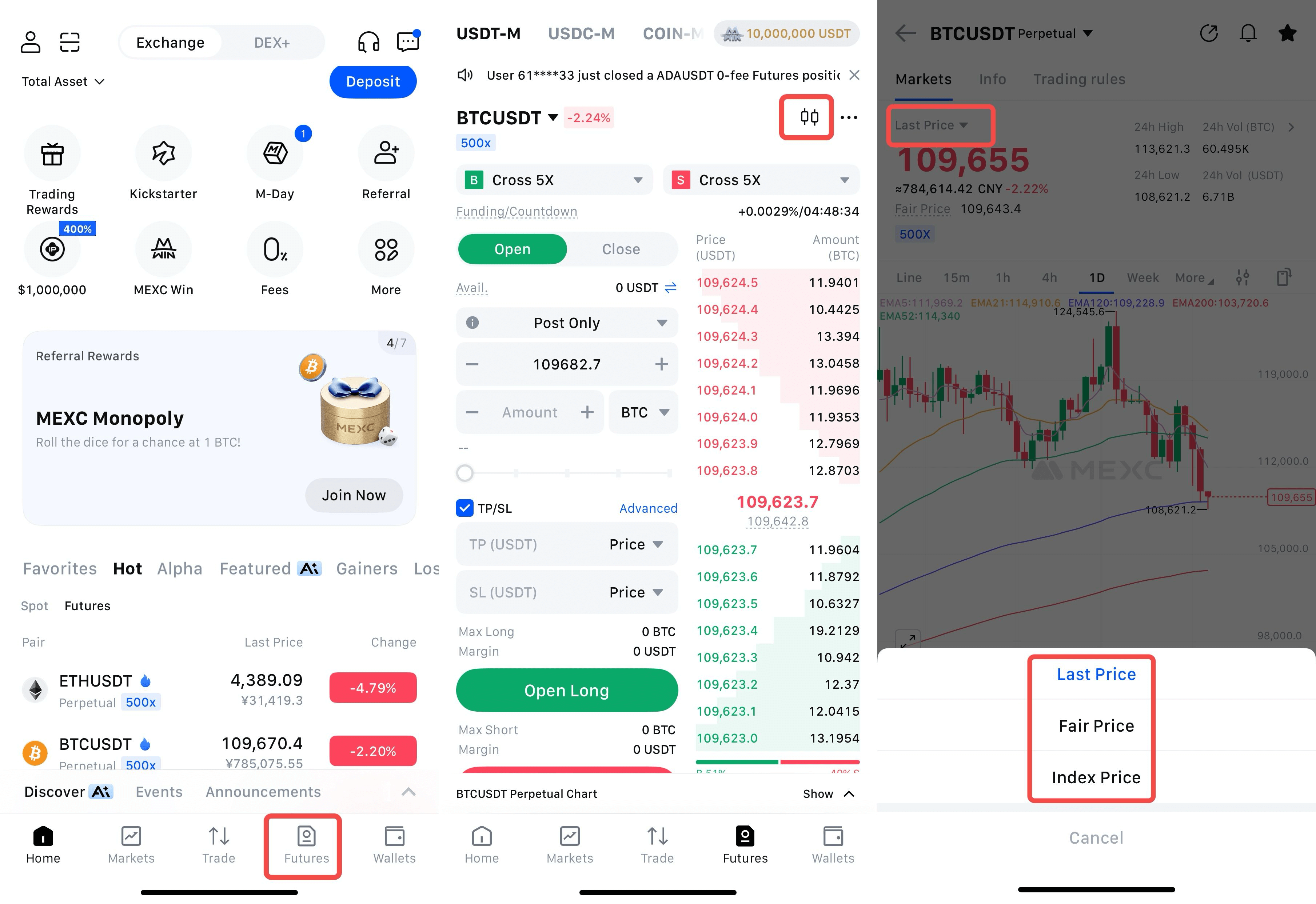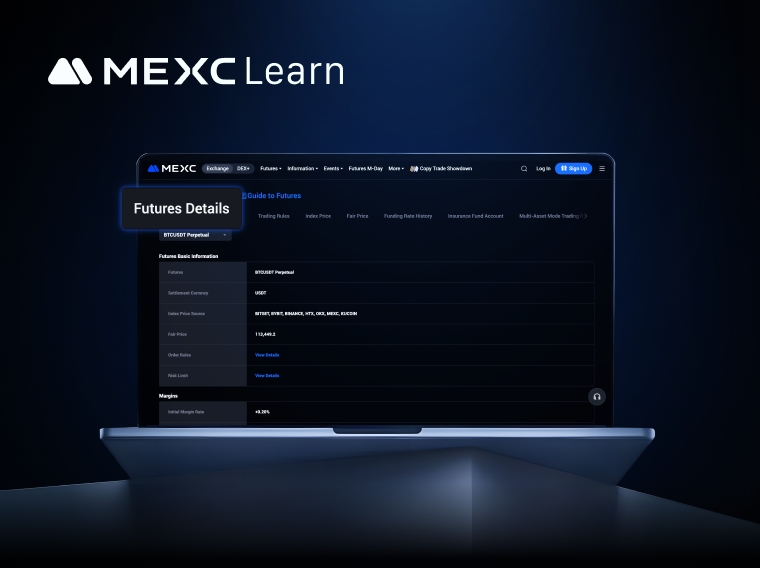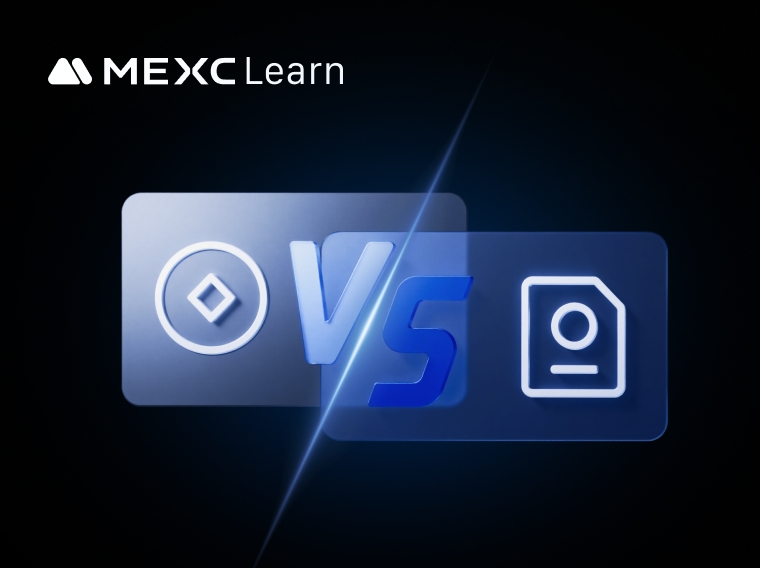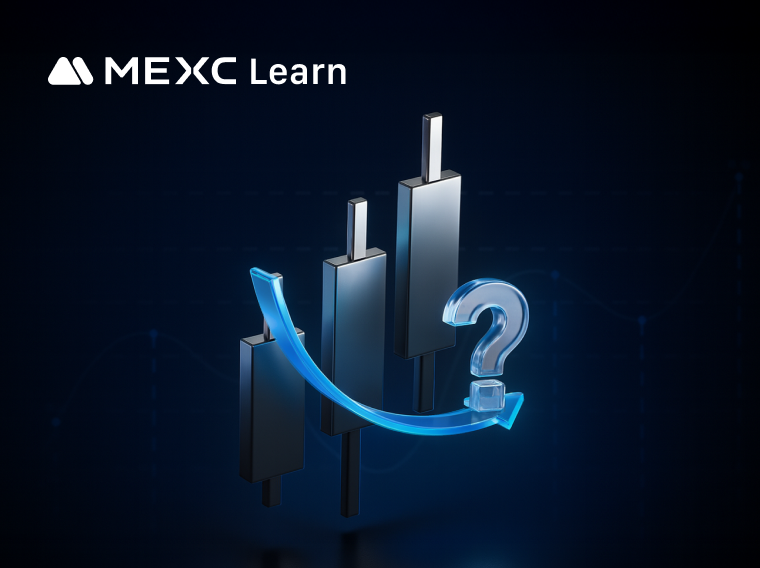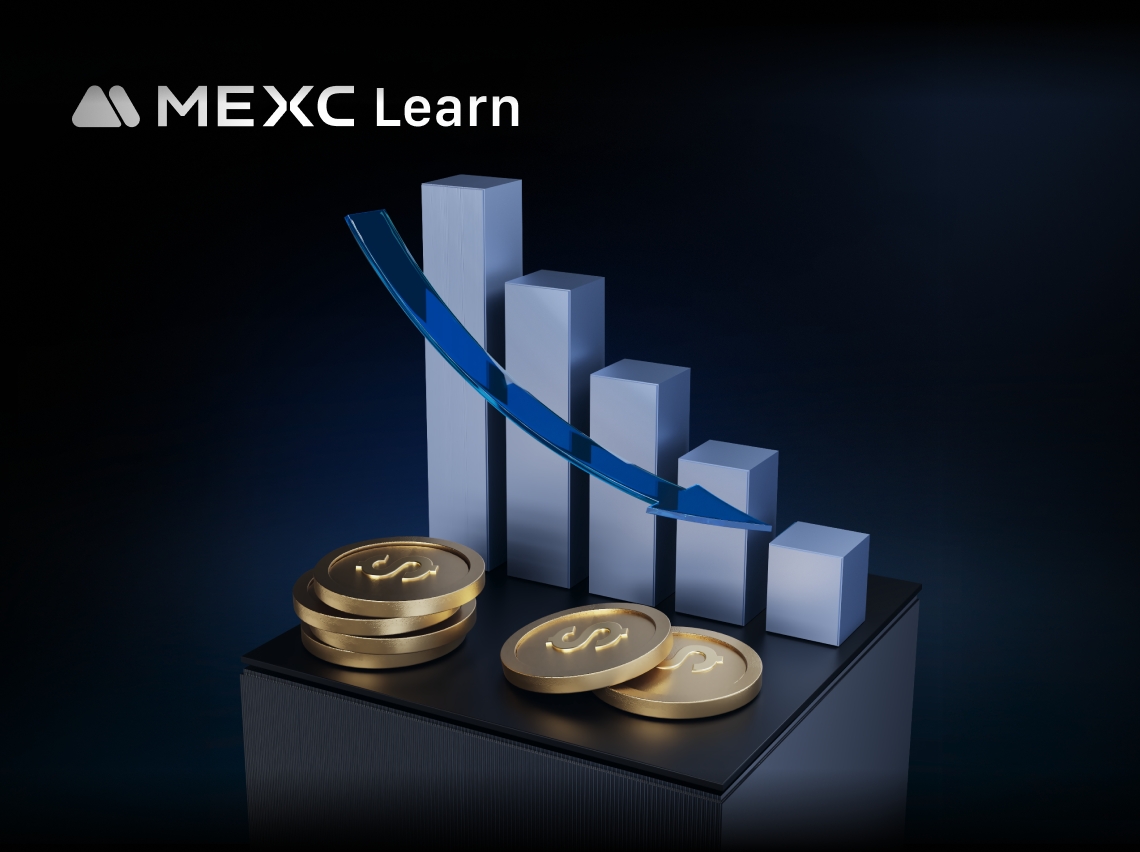When accessing the MEXC Futures trading interface, you’ll see that the charts and order book reflect more than a single price. In reality, three key prices play a critical role in shaping your trading decisions, profit and loss calculations, and overall position safety: the index price, the fair price, and the last price. These concepts are often misunderstood, particularly by new traders. For example, some may wonder why their liquidation price appears disconnected from the order book, or why minor unrealized PNL fluctuations occur immediately after opening a position. Developing a clear understanding of the definitions, functions, and interplay of these three prices is an essential step toward trading Futures with professionalism and managing risk effectively.
The index price is the weighted average of the underlying asset's price across major spot exchanges. As the price of the underlying asset changes, the index price is continuously updated to reflect the fair market value of the Futures pair. MEXC selects prices from major exchanges as the source of each Futures index, ensuring that the pricing of its Futures is based on real-time market data.
The purpose of setting the index price is to reduce the risk caused by price volatility and market manipulation, providing a more stable price reference.
Index Price = (Weight Percent of Exchange A × Price of the Underlying Asset on Exchange A + Weight Percent of Exchange B × Price of the Underlying Asset on Exchange B + ... + Weight Percent of Exchange N × Price of the Underlying Asset on Exchange N)
MEXC will periodically update the index components and weights. If extreme market conditions or abnormal price deviations occur, MEXC will take additional protective measures, including but not limited to changing the index components and weights without prior notice.
If the market data from an exchange is consistently delayed or shows significant deviation, its price data will be excluded from index calculations. Once the data quality from that exchange is restored, it will be reintegrated into the calculation.
If the spot price of a particular exchange deviates from the median of all exchanges by ±3%, MEXC will implement a price protection mechanism and exclude the spot price from that exchange (under extreme market conditions, the platform may adjust the median deviation coefficient for certain trading pairs or not be bound by this arrangement).
The fair price is calculated based on the index price and the cost basis moving average.
To improve market stability and reduce liquidation risk during abnormal market fluctuations, MEXC Perpetual Futures uses a specially designed fair price marking system. Instead of using the last price, the system sets the mark price to the fair price. This helps prevent unnecessary deviations between the market price and the price index caused by market manipulation or lack of liquidity, thereby avoiding unnecessary liquidation.
On the MEXC Futures trading page, you can view the Fair Price on the right side of the trading pair. Alternatively, you can set the candlestick chart to display the Fair Price at the top of the chart.
Fair Price = Median (Funding Rate Premium, Mid-Price Basis Fair Price, Last Price)
Funding Rate Premium = Index Price × (1 + Latest Funding Rate × (Hours Until Next Funding Settlement / Funding Settlement Period in Hours))
Mid-Price Basis Fair Price = Index Price + Moving Average of Basis (specified period) = Index Price + Moving Average [(Best Bid Price + Best Ask Price) / 2 - Index Price]
Last Price is the most recent Futures transaction price, updated in real-time.
The fair price only affects the liquidation price and unrealized PNL, it does not affect realized PNL.
This means that when user orders are executed, they may see positive or negative unrealized profit and loss immediately. This happens due to a slight deviation between the fair price and the last price. This is a normal phenomenon and does not mean that users have lost funds, but users must pay attention to the liquidation price to mitigate the risk of liquidation.
The last price refers to the price at which Futures pairs are instantly traded in the MEXC order book.
You can view this price by clicking on the Market Trades tab in the order book area on the MEXC Futures trading page.
Open the Futurestrading page on MEXC. Hover your mouse over Last Price ▼, Index Price ▼, or Fair Price ▼ above the candlestick chart, and a dropdown menu with three price options will appear. Click to select the price you want to use to switch between them.
1) Open the MEXC App and tap Futures at the bottom.
2) On the Futures trading page, tap the candlestick icon in the top right corner.
3) On the candlestick chart page, tap the screen rotation icon at the top right.
4) In the horizontal candlestick chart view, tap Last Price ▼, Index Price ▼, or Fair Price ▼ in the top right corner, and a dropdown menu with three price options will appear. Tap to select the price you want to use to switch between them.
The index price is the weighted average of an asset's prices across multiple major spot exchanges and represents its fair market value. Its primary function is to anchor the price of the trading pair to the real market, preventing manipulation from a single exchange. To ensure fairness, MEXC applies strict safeguards: if an exchange's data updates too slowly or its prices consistently deviate from normal ranges, it will be temporarily excluded from the calculation. Similarly, if an exchange's Spot price deviates by more than ±3% from the median of all data sources, it will also be removed to protect the accuracy of the index price during extreme conditions.
The fair price is MEXC's core risk-control mechanism designed to protect traders. It is calculated using the index price along with a moving average of the basis and is the sole reference for calculating unrealized PNL and triggering liquidations. Its purpose is to prevent unnecessary liquidations caused by sudden volatility or price spikes in illiquid markets.
The last price refers to the most recent executed trade on MEXC's order book. It directly determines the fill price of market orders and reflects the platform's real-time trading activity.
In summary, each of the three prices in MEXC Futures trading serves a distinct purpose: the last price acts as the executor of trades, the index price as the calibrator of fair market value, and the fair price as the guardian of position safety. Understanding and distinguishing these three concepts will enable traders to better assess market risks, design more robust strategies, and approach Futures trading with greater stability and confidence.
MEXC has officially rolled out its0-Fee Festevent, empowering users to significantly reduce their trading costs. With this initiative, users can truly save more, trade more, and earn more. By participating in the campaign, you'll enjoy ultra-low-fee trading on the MEXC platform while staying ahead of market trends and seizing fleeting investment opportunities the moment they arise. It's your gateway to smarter trading and greater wealth growth.
Why Choose MEXC Futures?Discover the unique advantages of trading Futures on MEXC and learn how to stay ahead in the derivatives market.
Disclaimer: The information provided in this material does not constitute advice on investment, taxation, legal, financial, accounting, or any other related services, nor does it serve as a recommendation to purchase, sell, or hold any assets. MEXC Learn offers this information for reference purposes only and does not provide investment advice. Please ensure you fully understand the risks involved and exercise caution when investing. MEXC is not responsible for users' investment decisions.
